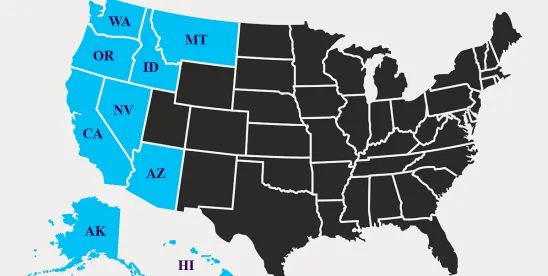The U.S. Court of Appeals for the Ninth Circuit has continued to clarify when a court can consider the back label of a product in connection with a false advertising claim. Misleading label information is a common basis for false advertising suits, especially under California’s Unfair Competition Law, False Advertising Law, and Consumer Legal Remedies Act. However, in recent decisions, the court has detailed new circumstances in which a label might be saved.
In the last few years, the Ninth Circuit has carefully parsed the wording and placement of labels, as well as the reasonableness of false advertising allegations. In Moore v. Trader Joe’s Co., 4 F.4th 874 (9th Cir. 2021), the court found that a product containing only 57-62% honey from the Manuka flower could still be advertised as “100% Manuka Honey.” The court asked whether the label was ambiguous, and thus whether a consumer would necessarily look beyond the front label of the product.
Expanding on that holding last year, in McGinity v. Proctor & Gamble Co., 69 F.4th 1093 (9th Cir. 2023) the court held that where a product’s front label is ambiguous, rather than misleading, the court is allowed to consider additional information provided on the back label in order to resolve the ambiguity. The court, considering a “nature fusion” shampoo, held that the front label was ambiguous because the phrase was “devoid of concrete meaning”, and the list of ingredients on the back label explained what was in the product.
The Ninth Circuit further clarified the rule earlier this Summer in Whiteside v. Kimberly-Clark Corp. 108 F.4th 771, 781 (9th Cir. 2024). In that case, plaintiffs alleged that the packaging of baby wipes, which states “plant-based” and “natural care” among images of plants, is misleading since the products contain some synthetic ingredients. The allegations were split between two variations of the label: one containing an asterisk and the clarification “70%+ by weight,” and the other without the asterisk and disclaimer. For both products, the back of the packaging clearly listed synthetic ingredients.
Noting that "the term can reasonably imply that a product is entirely derived from natural, plant-based ingredients,” The three-judge panel court found that the phrase “plant-based” is plausibly misleading when standing alone. However, the same phrase with an asterisk and disclaimer was instead ambiguous, and the dismissal as to those labels was affirmed.
Trader Joes, McGinity, and now Whiteside establish that a “front label is ambiguous when reasonable consumers would necessarily require more information before reasonably concluding that the label is making a particular representation.” Whiteside 108 F.4th at 781. Even a label with more than one plausible meaning can still be misleading unless a consumer would necessarily seek clarification elsewhere. A finding of front-label ambiguity is critical for a manufacturer who wishes to avail themselves of clarifications found on the product’s back. The presence of an asterisk suggests that more information is required to determine what representation is being made by a label, and may help the manufacturer receive the benefit of the doubt in close cases.




 />i
/>i
